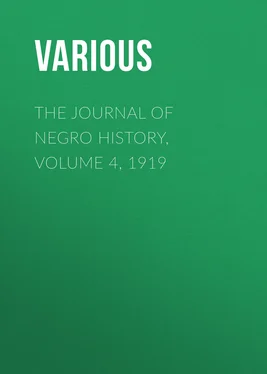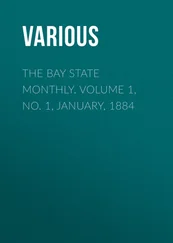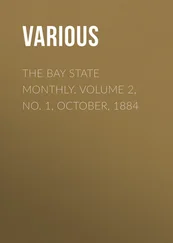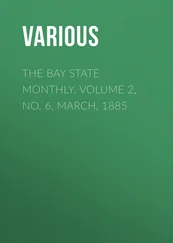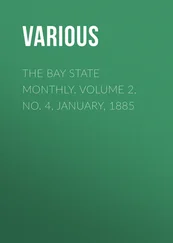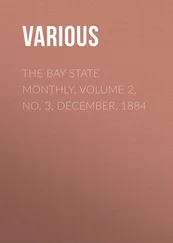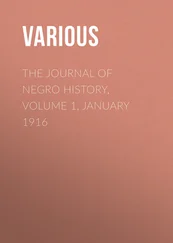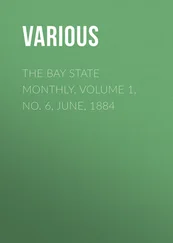Various - The Journal of Negro History, Volume 4, 1919
Здесь есть возможность читать онлайн «Various - The Journal of Negro History, Volume 4, 1919» — ознакомительный отрывок электронной книги совершенно бесплатно, а после прочтения отрывка купить полную версию. В некоторых случаях можно слушать аудио, скачать через торрент в формате fb2 и присутствует краткое содержание. Жанр: foreign_antique, periodic, История, foreign_edu, на английском языке. Описание произведения, (предисловие) а так же отзывы посетителей доступны на портале библиотеки ЛибКат.
- Название:The Journal of Negro History, Volume 4, 1919
- Автор:
- Жанр:
- Год:неизвестен
- ISBN:нет данных
- Рейтинг книги:5 / 5. Голосов: 1
-
Избранное:Добавить в избранное
- Отзывы:
-
Ваша оценка:
- 100
- 1
- 2
- 3
- 4
- 5
The Journal of Negro History, Volume 4, 1919: краткое содержание, описание и аннотация
Предлагаем к чтению аннотацию, описание, краткое содержание или предисловие (зависит от того, что написал сам автор книги «The Journal of Negro History, Volume 4, 1919»). Если вы не нашли необходимую информацию о книге — напишите в комментариях, мы постараемся отыскать её.
The Journal of Negro History, Volume 4, 1919 — читать онлайн ознакомительный отрывок
Ниже представлен текст книги, разбитый по страницам. Система сохранения места последней прочитанной страницы, позволяет с удобством читать онлайн бесплатно книгу «The Journal of Negro History, Volume 4, 1919», без необходимости каждый раз заново искать на чём Вы остановились. Поставьте закладку, и сможете в любой момент перейти на страницу, на которой закончили чтение.
Интервал:
Закладка:
After making an extensive study of the Latin language, he felt a desire to study Greek that he might read the New Testament in the original, but he had no means to prosecute this study. While in doubt as to how he could attain so desirable an end the Reverend William Bradford, of Wintonbury, a small parish composed, as its name imports, of a part of three towns, Winsor, Farmington and Symsbury, offered to instruct him in the Greek language. This benefactor promised also to secure there for Mr. Haynes a school paying him sufficient money to defray his expenses. Mr. Haynes said: "I exerted myself to the utmost to instruct the children of my school, and found I gave general satisfaction. The proficiency I made in studying the Greek language I found greatly exceeded the expectations of my preceptor." 37 37 Cooley, Sketches of the Life and Character of the Rev. Lemuel Haynes , p. 63.
He was thus serving as a "spiritual teacher in a respectable and enlightened congregation in New England, where he had been known from infancy only as a servant boy, and under all the disabilities of his humble extraction." "That reverence which it was the custom of the age to accord to ministers of the gospel," says his biographer, "was cheerfully rendered to Mr. Haynes." 38 38 Ibid. , p. 66.
All classes and ages were delighted with the sweet, animated eloquence of the man. In consideration of his talents Middlebury College later conferred upon him the degree of master of arts. 39 39 Simmons, Men of Mark , p. 677.
This led friends to advise that he should be licensed to preach, and on November 29, 1780, after "an examination in the languages, sciences, doctrines and experimental religion," he was licensed and preached intelligently from Psalm 96:1. He was ordained soon thereafter. Then came an early call to begin his ministry at the Congregational meeting house at Middle Granville, where he labored five years, preaching eloquently with zeal. The time was one of moral darkness with intemperance, profanity and infidelity rife. Strange doctrines intruded. Vice came boldly forward, but, like a rock, the young minister stood by his Lord and faith.
Among the pious in the church was Bessie Babbitt. She was a woman of considerable education and was engaged as a teacher in her town. Looking to Heaven for guidance, she was led, with consistent delicacy, to offer her heart to her pastor. He commended the proposal to God in prayer, and consulted other ministers. Knowing his birth and race, he sought their counsel. They advised in favor, and on September 22, 1773, they were married. There began then their happy married life which was blessed with nine children. 40 40 Ibid. , p. 678.
From his small retired parish, among the companions of his childhood, he was called to Torrington, Connecticut, where he continued preaching two years to large audiences. 41 41 Special Report of the United States Commissioner of Education, 1871, p. 342.
It is said that at Torrington a leading citizen was much displeased that the church should have "a nigger minister," and, to show his disrespect, this man went to church and sat with his hat on his head. "He hadn't preached far," said he, "when I thought I saw the whitest man I ever knew in that pulpit, and I tossed my hat under the pew."
The number of communicants increased during the term of his residence in Torrington. Some of the most respectable families from adjoining towns, particularly from Goshen, became his warmest friends, who constantly attended on his ministry. His biographer says: "The aged refer to his ministry with many delightful recollections. He was held in high estimation, especially by the church, and was esteemed by all classes as "an apt and very ready man in the pulpit." The mere mention of his name even now, after the lapse of half a century, seems to renew in their minds interesting associations. The church and society were strengthened by his labors, and many wished to retain him as their permanent pastor. The sensibility of a few individuals prevented, it is said, the accomplishment of their desires.
His eloquence and Christian nobility won him much attention and led to his being called to the pastorate of the Congregational Church in West Rutland, Vermont. The town was a country seat, and the church was one of importance. Then in the meridian of life, rich with the spirit and devoted to his calling, he was singularly successful; and while there were those who saw in him "that colored minister," all knew his pure white soul. The first year of his pastorate he received forty-two members by profession. In 1803 there came a great revival, and there were one hundred and three conversions, together with one hundred and fifty in the adjoining town of Pittsfield. Five years later there was another revival and Haynes received one hundred and nine. Naturally he was in demand by other churches as a revival preacher.
At this time New England was in a very backward state. The genial influence of science and religion had not been generally felt. There was no college in Vermont and its only academy was the one at Norwich, near Dartmouth College. There were not more than four or five Congregational ministers on the west side of the Green Mountains. A religious revival of considerable extent, under the preaching of Reverend Jacob Wood and others, had resulted in the formation of small churches. Certain parts of Connecticut were not much more advanced. In 1804 the Connecticut Missionary Society, therefore, appointed Mr. Haynes to labor in the destitute sections of Vermont. In 1809 he was appointed to a similar service by the Vermont Missionary Society. In this capacity Haynes became a great factor in the religious awakening throughout New England at that time.
In 1814 he was fraternal delegate from the Vermont to the Connecticut Ministers' Association at Fairfield. On his way thither he stopped on Sunday at New Haven, where, at the Blue Church (formerly Dr. Edwards'), he preached a sermon to a crowded house, having in the audience President Dwight of Yale and many distinguished people. At Fairfield the association insisted on his preaching the annual sermon.
Haynes soon exhibited evidences of being no ordinary man. He readily engaged in the heated theological discussion of his time, taking first rank as a theologian. 42 42 Woodson, The Education of the Negro Prior to 1861 , p. 280.
His most interesting debate was that with the famous Hosea Ballou, whom Haynes vanquished in his famous sermon based on the text, Ye shall not surely die . Many strange doctrines were then abroad. A writer says: "The Stoddardian principle of admitting moral persons, without credible evidence of grace, to the Lord's Supper, and the half-way covenant by which parents, though not admitted to the Lord's Supper, were encouraged to offer their children in baptism, prevailed in many of the churches. Great apathy was prevalent among professing Christians, and the ruinous vices of profaneness, Sabbath-breaking and intemperance were affectingly prevalent among all classes. The spark of evangelical piety seemed to be nearly extinct in the churches. Revivals of religion were scarcely known except in the recollections of a former age. Some of the essential doctrines of grace were not received even by many in the churches. 43 43 Cooley, Sketches of the Life and Character of the Rev. Lemuel Haynes , p. 67.
Respecting the operations of the Holy Spirit, Mr. Haynes adopted the same principles as Edwards and Whitefield. He became effective in dispelling some of these clouds of doubt, bringing the people back to a more righteous conduct. Out of it he emerged a man of fame.
Happy as was this apostle in his work at Rutland the violent political controversy of his time was divided between two militant parties with one of which every freeman felt that he should be allied. Imbued with the spirit of the American Revolution, Haynes could not be neutral. "In principle," says his biographer, "he was a disciple of Washington and, therefore, favored those measures conducive of national government." 44 44 Ibid. , p. 169; Annals of the American Academy of Political and Social Science , XLIX, p. 234.
As party spirit rapidly developed into deeply rooted rancor, sharp differences of opinion led to controversy in his parish. Invited to preach on political occasions and in some cases to the public through the press, he discussed political affairs with such keenness and sarcasm that unprincipled parasites in his community were much disturbed. In one of his discourses he used the following expression: "A dissembler is one proud of applause—will advertise himself for office—dazzling the public man with high pretext, like aspiring Absolom, 'Oh that I were made judge in the land, that every man might come unto me and I would do him justice.' Such subjects to applause and hypocrisy will, even when the destinies of their country are at stake, be to a commonwealth what Arnold was to American freedom or Robespierre to a French Republic." 45 45 Cooley, Sketches of the Life and Character of the Rev. Lemuel Haynes , p. 170.
Интервал:
Закладка:
Похожие книги на «The Journal of Negro History, Volume 4, 1919»
Представляем Вашему вниманию похожие книги на «The Journal of Negro History, Volume 4, 1919» списком для выбора. Мы отобрали схожую по названию и смыслу литературу в надежде предоставить читателям больше вариантов отыскать новые, интересные, ещё непрочитанные произведения.
Обсуждение, отзывы о книге «The Journal of Negro History, Volume 4, 1919» и просто собственные мнения читателей. Оставьте ваши комментарии, напишите, что Вы думаете о произведении, его смысле или главных героях. Укажите что конкретно понравилось, а что нет, и почему Вы так считаете.
